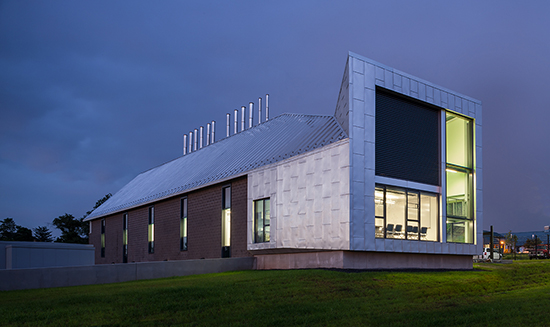
We consistently work towards incorporating energy-saving tactics into the buildings we design. We profile recently-completed or soon-to-be completed projects detailing energy-saving statistics. We are committed to energy efficient spaces and reducing the environmental impact of each building.
Today we’re looking at Penn State’s Pell Laboratory for Advanced Biological Studies, a 22,395 GSF building which houses some of the most cutting edge infectious disease research in the world in a “BSL-3 Enhanced” biocontainment facility where scientists study in a safe and secure environment.
This week the USGBC is drawing attention to the value of green building design, sustainable strategies and energy efficiency. The building typologies we specialize in are often seen as the energy hog on campus, but we still make every effort to minimize a building’s impact.
Biocontainment and sustainability do not necessarily go hand-in-hand; typically, these are some of the least energy efficient building types due to single-pass 100% outside air-systems and high air-change rates. Through a tremendous focus on energy efficient approaches across the building and its systems; the Pell Laboratory is tracking LEED Gold.

Reduction in energy usage from a typical biology lab building in its climate, meeting the current AIA 2030 Commitment target.

This reduction in energy usage is equal to the annual energy of 49 homes in the northeast.

Reduction in lighting power density compared to a code building.

Of the regularly occupied areas are daylit.
Both the reduction in energy use and lighting power density meet the AIA 2030 Commitment targets in these areas. The building also has a high performance envelope utilizing triple glazing, sunshading, is thermally broken, and is highly insulated with limited glazing.

Related:
The Story behind the Photograph

